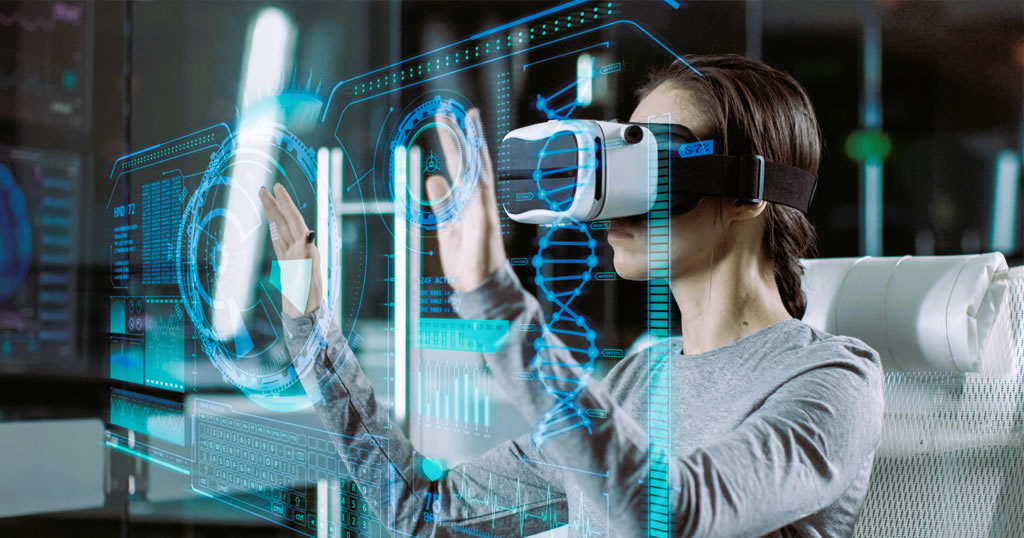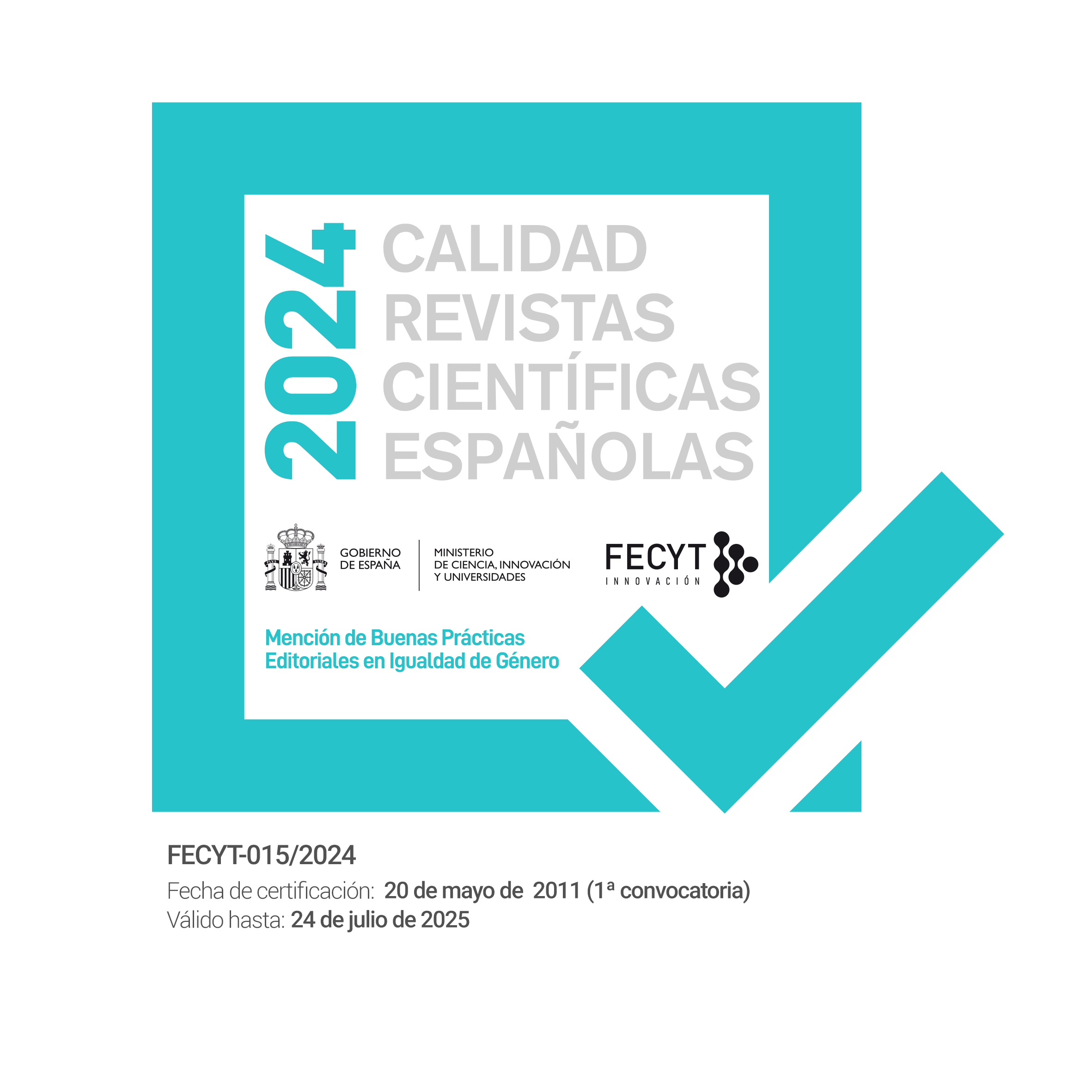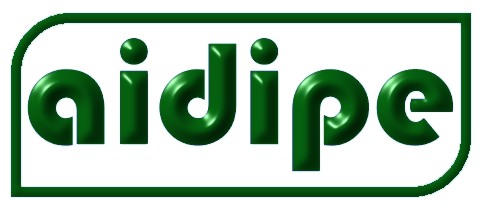Factors that enhance virtual education in a Post-Covid stage
DOI:
https://doi.org/10.30827/relieve.v30i2.27503Keywords:
Distance Education, Student, Online Learning, Pandemic, COVID-19Abstract
The objective of this research was to identify the factors with the highest incidence that potentiated virtual education at the Autonomous University of Tamaulipas during the Covid-19 pandemic. We worked on a quantitative approach with a descriptive transactional design with a correlational scope due to the analytical approach and types of data used. The Satisfaction, Interaction, Self-sufficiency and Self-regulated Learning scale in virtual courses of Kuo et al. (2014), was used. Which analyzes: Student-student interaction, Student-instructor interaction, Student-content interaction, Self-efficacy in the use of the Internet, Self-regulated Learning and Satisfaction Satisfaction about the virtual course. The results showed that most of the students (stratified sample n = 3604, Age M = 20.49, SD ± 0.552, Min = 18, Max = 28) presented high levels of satisfaction in the online courses and more than 80% of the participants expressed their willingness to continue studying under the virtual modality. The factors of self-efficacy in the use of the Internet and the interaction of the student-instructor showed positive and significant correlations (p < 0.05) with respect to student satisfaction under the virtual modality, in addition, the older participants presented more satisfaction than the younger subjects younger. On the other hand, the gender of the participants, their employability status and their age range no show significant differences (p > 0.05) as to scores obtained.
Downloads
References
Amaya, A., & Navarro, M. (2017). Presente y futuro de la educación a distancia de la UAT. En G. Coronado. La educación a distancia en México: una década de sostenido esfuerzo institucional (pp. 191-216). Universidad de Guadalajara, Sistema de Universidad Virtual.
Alenezi, A., Karim, A., & Veloo, A. (2010). An empirical investigation into the role of enjoyment, computer anxiety, computer self-efficacy and Internet experience in influencing the students' intention to use e-learnng: A case study from Saudi Arabian government universities. The Turkish Online Journal of Educational Technology, 9(4), 22-34. https://eric.ed.gov/?id=EJ908069
Almeida, G. (2011). El constructivismo como modelo pedagógico. Fundación Educativa Ibarra.
Alqurashi, E. (2018). Predicting student satisfaction and perceived learning within online learning environments. Distance Education. 40(1), 133-148. https://doi.org/10.1080/01587919.2018.1553562 DOI: https://doi.org/10.1080/01587919.2018.1553562
Anderson, T. (2003). Modes of interaction in distance education: Recent developments and research questions. En M. Moore & W. Anderson, Handbook of distance education (pp. 129–144). Erlbaum.
Araya, V., Alfaro, M., & Andonegui, M. (2007). Constructivismo: orígenes y perspectivas. Universidad Pedagógica Experimental Libertador.
Artino, A. (2008). Promoting academic motivation and self-regulation: Practical guidelines for online instructors. TechTrends, 52(3), 37-45. https://doi.org/10.1007/s11528-008-0153-x DOI: https://doi.org/10.1007/s11528-008-0153-x
Artino, A. (2007). Online military training: Using a social cognitive view of motivation and self-regulation to understand students' satisfaction, perceived learning, and choice. Quarterly Review of Distance Education, 8(3), 191-202. https://learntechlib.org/p/106651/
Ausubel, D. (2002). Adquisición y retención del conocimiento. Una perspectiva cognitiva. Paidós.
Balderas, J., Roque, R., López, A., Salazar, R., & Juárez, C. (2021). ¿Cómo cambió la enseñanza-aprendizaje de las asignaturas prácticas en el área de tecnologías de la información con la covid-19? Revista Iberoamericana para la Investigación y el Desarrollo Educativo, 11(22), e116. https://doi.org/10.23913/ride.v11i22.826 DOI: https://doi.org/10.23913/ride.v11i22.826
Barnard, L., Paton, V., & Lan,W. (2008). Online self-regulatory learning behaviors as a mediator in the relationship between online course perceptions with achievement. International Review of Research in Open & Distance Learning, 9(2), 1-11. https://doi.org/10.19173/irrodl.v9i2.516 DOI: https://doi.org/10.19173/irrodl.v9i2.516
Battalio, J. (2007). Interaction online: A reevaluation. Quarterly Review of Distance Education, 8(4), 339–352. https://learntechlib.org/p/106666/
Biner, P., Bink, M., Huffman, M., & Dean, R. (1997). The impact of remote-site group size on student satisfaction and relative performance in interactive telecourses. The American Journal of Distance Education, 11(1), 23-33. https://doi.org/10.1080/08923649709526949 DOI: https://doi.org/10.1080/08923649709526949
Bolliger, D., & Martindale, T. (2004). Key factors for determining student satisfaction in online courses. International Journal on E-Learning, 3(1), 61–67. https://www.academia.edu/60156389/Key_Factors_for_Determining_Student_Satisfaction_in_Online_Courses
Cárdenas, M., & Arancibia, H. (2014). Statistical power and effect size calculating in G*Power: complementary analysis of statistical significance testing and its application in psychology. Salud & Sociedad, 5(2), 210-224. https://redalyc.org/articulo.oa?id=439742475006
Chang, S. H., & Smith, R. (2008). Effectiveness of personal interaction in a learner-centered paradigm distance education class based on student satisfaction. Journal of Research on Technology in Education, 40(4), 407-426. https://doi.org/10.1080/15391523.2008.10782514 DOI: https://doi.org/10.1080/15391523.2008.10782514
Chejlyk, S. (2006). The effects of online course format and three components of student perceived interactions on overall course satisfaction. Cappella University.
Chu, R., & Tsai, C. (2009). Self-directed learning readiness, Internet self-efficacy and preferences towards constructivist Internet-based learning environments among higher-aged adults. Journal of Computer Assisted Learning, 25(1), 489-501. https://doi.org/10.1111/j.1365-2729.2009.00324.x DOI: https://doi.org/10.1111/j.1365-2729.2009.00324.x
Cohen, J. (1988). Statistical power analysis for the behavioral sciences (2a ed.). Lawrence Erlbaum Associates.
Di Bernardo, J., & Gauna, M. (2005). Determinación de los “estilos de aprendizaje” de los estudiantes de bioquímica como paso inicial en la búsqueda de un aprendizaje significativo. Universidad Nacional del Noreste.
Eastin, M. S., & LaRose, R. (2000). Internet self-efficacy and the psychology of the digital divide. Journal of Computer Mediated Communication, 6(1), 611-618. https://doi.org/10.1111/j.1083-6101.2000.tb00110.x DOI: https://doi.org/10.1111/j.1083-6101.2000.tb00110.x
Elshami, W., Taha, M., Abuzaid, M., Saravanan, C., Al Kawas, S., & Abdalla, M. (2021). Satisfaction with online learning in the new normal: perspective of students and faculty at medical and health sciences colleges. Med Educ Online, 26(1), 1920-1929. https://doi.org/10.1080/10872981.2021.1920090 DOI: https://doi.org/10.1080/10872981.2021.1920090
Feng, M., & Gavin, J. (2021). Tea or tears: online teaching during the COVID-19 pandemic. Journal of Education for Teaching, 47(2), 290-292. https://doi.org/10.1080/02607476.2021.1886834 DOI: https://doi.org/10.1080/02607476.2021.1886834
Gagliardi, V. (2020). Educational challenges in times of pandemic. Questión, 2020(1), 2-6. https://doi.org/10.24215/16696581e312
García, V. (2011). Modelos pedagógicos y teorías del aprendizaje en la educación a distancia. Universidad de Guadalajara.
González , M., Pino, M., & Penado, M. (2017). Estudio de la satisfacción percibida por los estudiantes de la UNED con su vida universitaria. Revista Iberoamericana de Educación a Distancia, 20(1), 243-260. https://doi.org/10.5944/ried.20.1.16377 DOI: https://doi.org/10.5944/ried.20.1.16377
G*Power. (2021). Statistics program G*Power version 3.1.9.6. Düsseldorf: Düsseldorf University.
Hall, R. (2016). Ética de la investigación social. Universidad Autónoma de Querétaro.
Hargis, J. (2000). The self-regulated learner advantage: Learning science on the internet. Electronic Journal of Science Education, 4(4), 1-8. https://learntechlib.org/p/94460/
Hernández, R., Fernández, C., & Baptista, M. (2014). Metodología de la investigación (6ª Edición). McGraw Hill.
Ho Tim T., Bruce, H., & Korszun, a. (2021). To see or not to see: Should medical educators require students to turn on cameras in online teaching? Medical Teacher, 43(9), 1099-1210. https://doi.org/10.1080/0142159X.2021.1873258 DOI: https://doi.org/10.1080/0142159X.2021.1873258
Hopkins, W. (2006). A scale of magnitudes for effect statistics. Auckland University.
IBM. (2017). IBM SPSS Statistics for Windows, version 23. IBM Corporation.
Kaminski, K., Switzer, J., & Gloeckner, G. (2009). Workforce readiness: A study of university students' fluency with information technology. Computers & Education, 53(2), 228-233. https://doi.org/10.1016/j.compedu.2009.01.017 DOI: https://doi.org/10.1016/j.compedu.2009.01.017
Kuo, Y., Eastmond, J., Schroder, K., & Bennett, L. J. (2009). Student perceptions of interactions and course satisfaction in a blended learning environment. Jackson State University.
Kuo, Y., Walker, A., Belland, B., & Schroder, K. (2013). A predictive study of student satisfaction in online education programs. The International Review of Research in Open and Distance Learning, 14(1), 16-39. https://doi.org/10.19173/irrodl.v14i1.1338 DOI: https://doi.org/10.19173/irrodl.v14i1.1338
Kuo, Y., Walker, A., Schroder, K., & Belland, B. (2014). Interaction, Internet self-efficacy, and self- regulated learning as predictors of student satisfaction in online education courses. The Internet and Higher Education 20(1), 35-50. https://doi.org/10.1016/j.iheduc.2013.10.001 DOI: https://doi.org/10.1016/j.iheduc.2013.10.001
Landrum, B., Bannister, J., Garza, G., & Rhame, S. (2020). A class of one: Students’ satisfaction with online learning. Journal of Education for Business, 96(2), 82-88. https://doi.org/10.1080/08832323.2020.1757592 DOI: https://doi.org/10.1080/08832323.2020.1757592
Levine, D., Krehbiel, T., & Berenson, M. (2006). Estadística. Pearson.
Liang, J. C., y Tsai, C. C. (2008). Internet self-efficacy and preferences toward constructivist Internet-based learning environments: A study of pre-school teachers in Taiwan. Educational Technology & Society, 11(1), 226-237. https://learntechlib.org/p/75021/
Liao, P. W., y Hsieh, J. Y. (2011). What influences Internet-based learning? Social Behavior and Personality, 39(7), 887-896. https://doi.org/10.2224/sbp.2011.39.7.887 DOI: https://doi.org/10.2224/sbp.2011.39.7.887
Lin, C., Zheng, B., & Zhang, Y. (2015). Interaction, Satisfaction, and Perceived Progress in Online Language Courses. Association for the Advancement of Computing in Education.
Manes, F., y Niro, M. (2014). Usar el cerebro. Paidós.
McManus, T. (2000). Individualizing instruction in a web-based hypermedia learning environment: non-linearity, advance organizers, and self-regulated learners. Journal of Interactive Learning Research, 11(3), 219–251. https://learntechlib.org/primary/p/8486/
Moller, L., & Huett, J. (2012). The next generation of distance education: Unconstrained learning. Springer. https://link.springer.com/book/10.1007/978-1-4614-1785-9 DOI: https://doi.org/10.1007/978-1-4614-1785-9
Moore, M., & Kearsley, G. (1996). Distance education: A systems view. Wadsworth.
Morales, M. (2016). Estudio descriptivo de la calidad de vida laboral en profesionistas de la contaduría de la ciudad de Toluca. Universidad Autónoma del Estado de México.
Organización Mundial de la Salud. (2020). Brote de enfermedad por coronavirus (Covid-19; Press Conference). Organización de las Naciones Unidas.
Palmer, A., & Koenig-Lewis, N. (2011). The effects of pre-enrolment emotions and peer group interaction on students’ satisfaction. Journal of Marketing Management, 27(11–12), 1208–1231. https://www.tandfonline.com/doi/abs/10.1080/0267257X.2011.614955 DOI: https://doi.org/10.1080/0267257X.2011.614955
Pérez, Z. (2011). Los diseños de método mixto en la investigación en educación: Una experiencia concreta Revista Electrónica Educare, 15(1), 15-29. https://doi.org/10.15359/ree.15-1.2 DOI: https://doi.org/10.15359/ree.15-1.2
Peterson, S. (2011). Self-regulation and online course satisfaction in high school. University of Southern California.
Pintrich, P. R., Smith, D. A., Garcia, T., & McKeachie,W. J. (1993). Reliability and predictive validity of the motivated strategies for learning questionnaire (MSLQ). Educational and Psychological Measurement, 53(3), 801-813. https://doi.org/10.1177/0013164493053003024 DOI: https://doi.org/10.1177/0013164493053003024
Rajeh, M. T., Abduljabbar, F. H., Alqahtani, S. M., Waly, F. J., Alnaami, I., Aljurayyan, A., & Alzaman, N. (2021). Students’ satisfaction and continued intention toward e-learning: a theory-based study. Medical Education Online, 26(1). https://doi.org/10.1080/10872981.2021.1961348 DOI: https://doi.org/10.1080/10872981.2021.1961348
Reimers, F. (2021). Educación y COVID-19: Recuperarse de la pandemia y reconstruir mejor. IBE.
Reinhart, J., & Schneider, P. (2001). Student satisfaction, self-efficacy, and the perception of the two-way audio/video distance learning environment: A preliminary examination. Quarterly Review of Distance Education, 2(4), 357-365. https://www.learntechlib.org/p/92806/
Rodríguez. W. (2007). El constructivismo: una invitación al análisis de sus antecedentes, vertientes y críticas. Pedagogía, 39(1), 12-28. https://dialnet.unirioja.es/servlet/articulo?codigo=9652674
Salinas, A., Morales, J., & Martínez, P. (2008). Satisfacción del estudiante y calidad universitaria: un análisis exploratorio en la Unidad Académica Multidisciplinaria Agronomía y Ciencias de la Universidad Autónoma de Tamaulipas, México. Revista de Enseñanza Universitaria, 1(31), 39-55. https://dialnet.unirioja.es/servlet/articulo?codigo=3900906
Sánchez, D., & Morales, H. (2021). Retos de la pedagogía en los tiempos de Covid-19. Archivos en Medicina Familiar, 23(2), 59-64. https://www.medigraphic.com/cgi-bin/new/resumen.cgi?IDARTICULO=95946
Schianio, A., Biasutti, M., & Philippe, R. (2021). Creative pedagogies in the time of pandemic. Music Education Research, 23(2), 167-178. https://doi.org/10.1080/14613808.2021.1881054 DOI: https://doi.org/10.1080/14613808.2021.1881054
Schunk, D. (2005). Self-regulated learning. Educational Psychologist, 40(2), 85-94. https://doi.org/10.1207/s15326985ep4002_3 DOI: https://doi.org/10.1207/s15326985ep4002_3
Shyju, P., Vinodan, A., Sadekar, P., Sethu, M., & Lama, R. (2021). Determinants of online learning efficacy and satisfaction of tourism and hospitality management students during the COVID-19 pandemic. Journal of Teaching in Travel & Tourism, 21(4), 403-427. https://doi.org/10.1080/15313220.2021.1998941 DOI: https://doi.org/10.1080/15313220.2021.1998941
Universidad Autónoma de Tamaulipas. (2018). Código ética en la investigación. Universidad Autónoma de Tamaulipas.
Vega, C. (2015). Papel de trabajo, Aspectos epistemológicos de la estimación estadística de modelos: Investigación Ex-post-Facto. Instituto de Matemática y Cálculo Aplicado.

Downloads
Published
How to Cite
Issue
Section
License
Copyright (c) 2024 RELIEVE – Electronic Journal of Educational Research and Evaluation

This work is licensed under a Creative Commons Attribution-NonCommercial 4.0 International License.
The authors grant non-exclusive rights of exploitation of works published to RELIEVE and consent to be distributed under the Creative Commons Attribution-Noncommercial Use 4.0 International License (CC-BY-NC 4.0), which allows third parties to use the published material whenever the authorship of the work and the source of publication is mentioned, and it is used for non-commercial purposes.
The authors can reach other additional and independent contractual agreements, for the non-exclusive distribution of the version of the work published in this journal (for example, by including it in an institutional repository or publishing it in a book), as long as it is clearly stated that the Original source of publication is this magazine.
Authors are encouraged to disseminate their work after it has been published, through the internet (for example, in institutional archives online or on its website) which can generate interesting exchanges and increase work appointments.
The fact of sending your paper to RELIEVE implies that you accept these conditions.
















